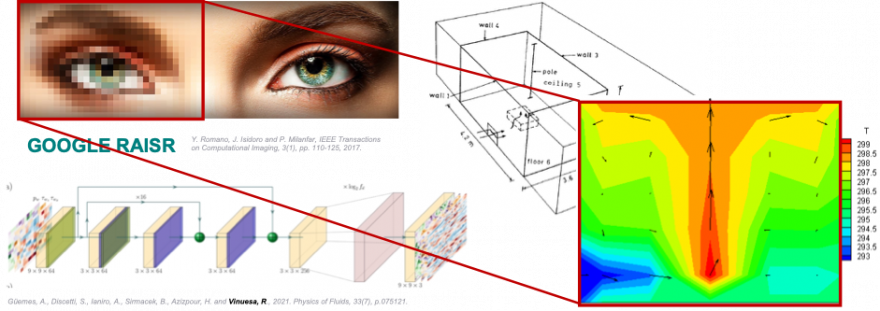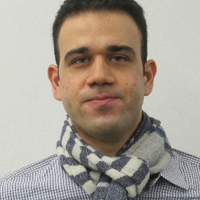About the project
Objective
This research project aims to realize faster-than-real-time (simulation time less than physical flow time) and high-resolution fluid flow simulation in engineering applications, with indoor climate as a pilot. The expected outcome of this project is a static CNN for super-resolution to achieve fast prediction of steady-state indoor airflow, a hybrid RCNN for super-resolution to achieve faster-than-real-time prediction of transient indoor airflow and standards for low-resolution input data by numerical simulation and experimental data. Besides the indoor flow simulations, this project would open a broad spectrum of engineering accurate computational fluid dynamics (CFD) applications complementary to today’s standard application of RANS turbulence models.
Background
Fast, high-resolution heat and mass transfer prediction are critical in many engineering applications. For example, in creating a desired indoor climate, fast and high-resolution airflow and contaminant transport simulation would help sustain life, reduce cost, and minimize energy consumption. In specific scenarios such as emergency management, conceptual design, heating, ventilation, air conditioning and refrigeration (HVAC&R) system control, faster-than-real-time simulation is desired.
Borrowed from computer vision and image recognition, super-resolution is a promising novel approach for the fast analysis of fluid mechanics problems. Super-resolution refers to techniques that obtain a high-resolution flow image output from a low-resolution flow image input. However, super-resolution implementation in real engineering applications faces two major challenges. Firstly, the input low-resolution flow data could be either obtained by fast and computationally inexpensive simulation, e.g., coarse grid CFD simulation, which might be associated with wrong physics or by experimental measurements, where the least number of sensors needed should be identified. Secondly, for transient indoor/outdoor airflow, super-resolution fails to extrapolate the flow fields that belong to a different statistical distribution. Therefore, this study aims to solve the two challenges that state-of-the-art super-resolution models face.
Crossdisciplinary collaboration
The researchers in the team represent the KTH of Architecture and the Built Environment, Department of Civil and Architectural Engineering, KTH School of Engineering Sciences, and Department of Engineering Mechanics.
Watch the recorded presentation at the Digitalize in Stockholm 2023 event:



